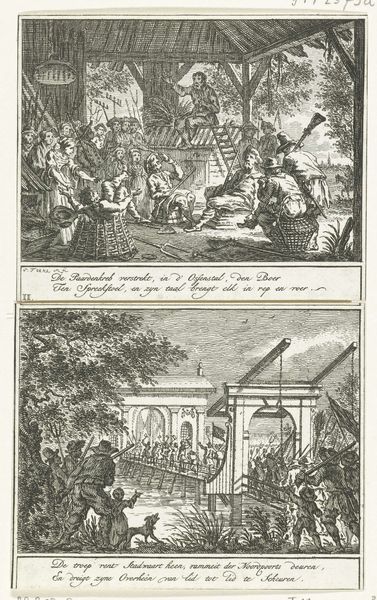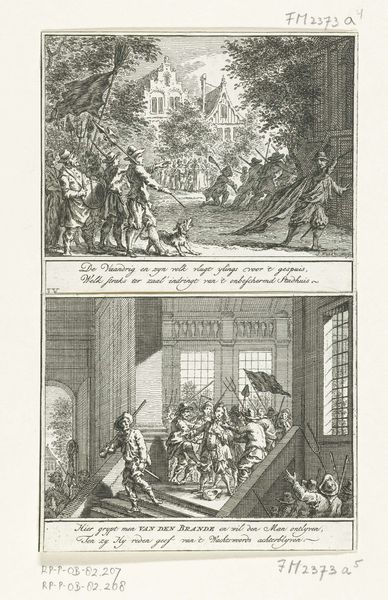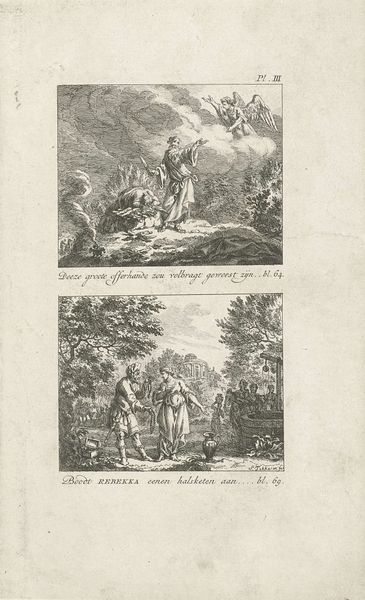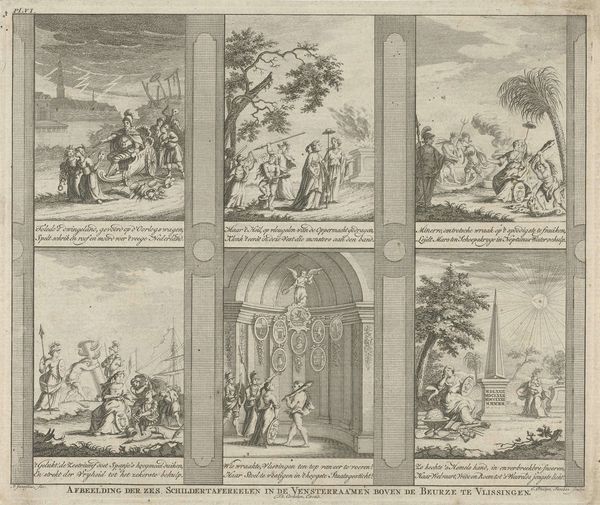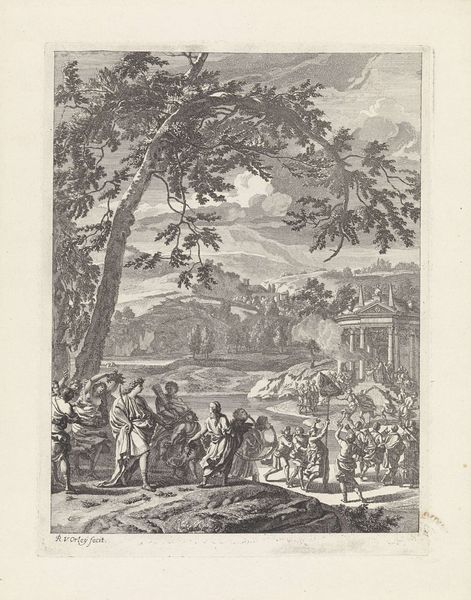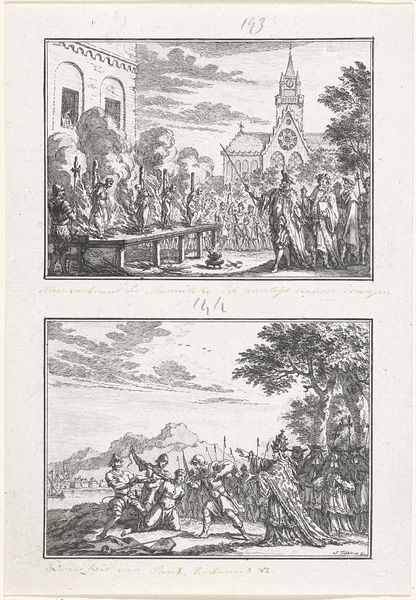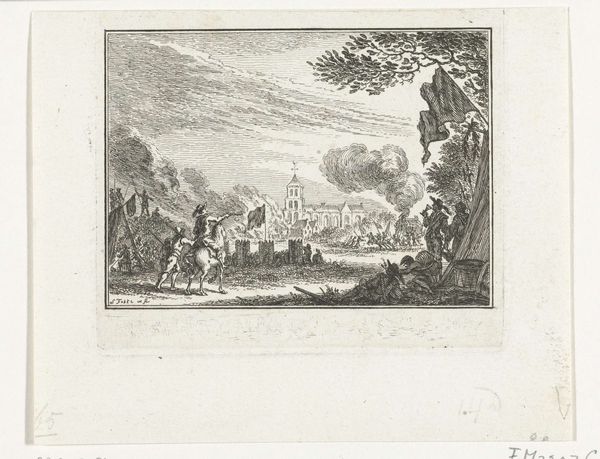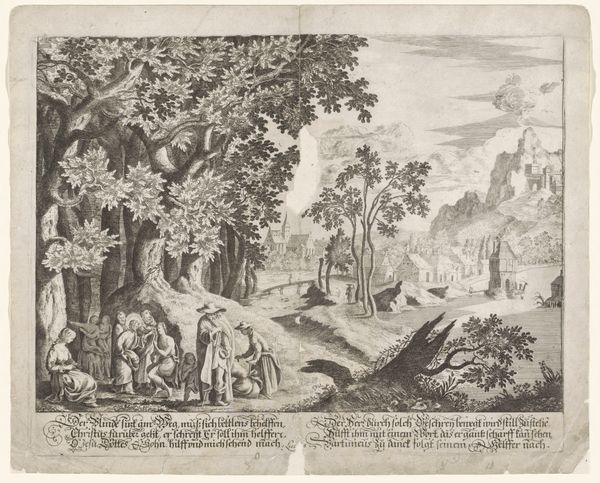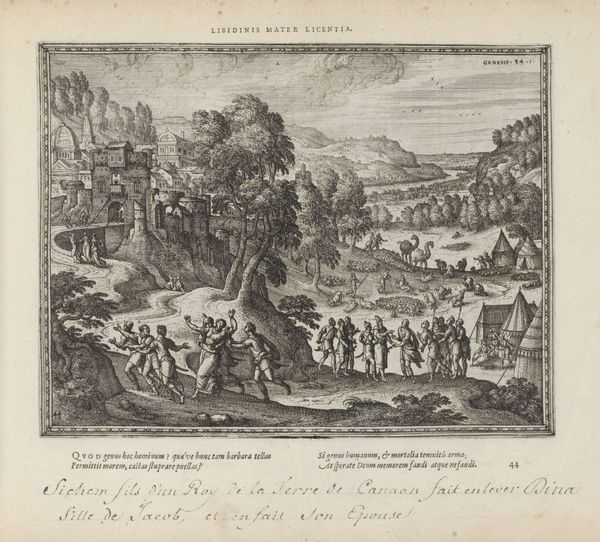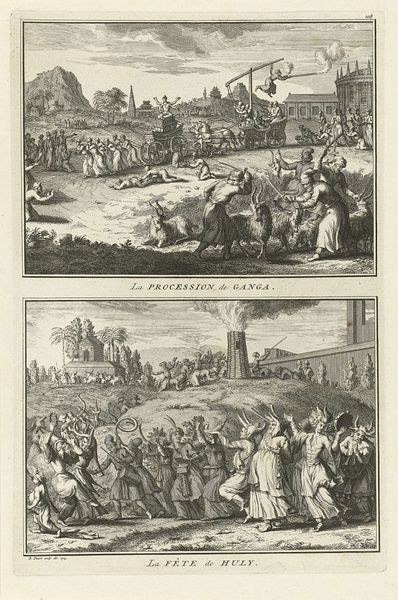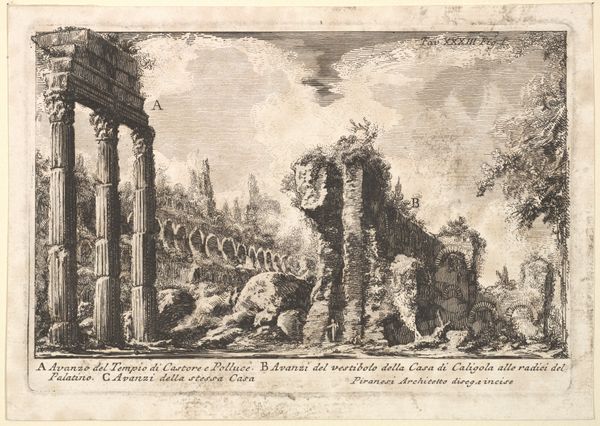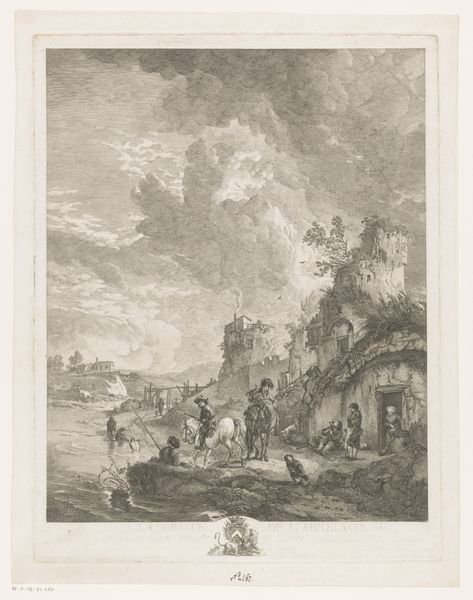
Christenen verbranden een joodse synagoge en Flavius Stilicho verdrinkt Mascezil 1722 - 1784
0:00
0:00
print, engraving
#
narrative-art
#
baroque
# print
#
old engraving style
#
landscape
#
figuration
#
line
#
cityscape
#
history-painting
#
engraving
#
realism
Dimensions: height 179 mm, width 118 mm
Copyright: Rijks Museum: Open Domain
Editor: Here we have "Christenen verbranden een joodse synagoge en Flavius Stilicho verdrinkt Mascezil," an engraving by Simon Fokke, dating from 1722 to 1784. It's quite striking, presented as two distinct scenes stacked vertically. I'm immediately drawn to the raw depiction of violence in the upper half. What historical context should we consider when viewing this? Curator: It's crucial to consider the role of prints like these in disseminating narratives, particularly during the 18th century. Fokke’s engraving isn’t just a depiction; it’s a statement. Consider the period – the Enlightenment was dawning, yet deeply entrenched prejudices persisted. The printing press was, by this period, becoming a tool of mass media, spreading imagery – often biased – quickly and widely. Editor: So, the choice to depict these two events, the synagogue burning and the drowning, wasn't just about recording history, but about influencing public opinion? Curator: Precisely. Think about the act of selecting these scenes and pairing them together. What statement is being made by juxtaposing religious persecution with political intrigue? What values or biases might it reflect or reinforce? Ask yourself, who was this print made for, and what kind of power did that audience wield? The power dynamics implicit in these choices is deeply telling of the period. Editor: It seems less like neutral reporting and more like actively participating in the socio-political landscape. I see the figures participating in the antisemitic action are centered in the action with very detailed line work, contrasted to a more chaotic, rough composition surrounding Mascezil's drowning. I'm really prompted to compare those figures and ponder the symbolism here. Curator: Exactly! Think of how museums and galleries, even today, shape the narratives around history by choosing which works to display and how to contextualize them. Fokke’s engraving, in its time, did something similar on a wider scale, through accessible print. Editor: This engraving becomes a lens through which to understand 18th-century biases and power structures, which I wouldn't have considered upon my initial viewing. Curator: Indeed, understanding art is about understanding its function within a given time period and cultural values and social dynamics are visualized for all time.
Comments
No comments
Be the first to comment and join the conversation on the ultimate creative platform.
